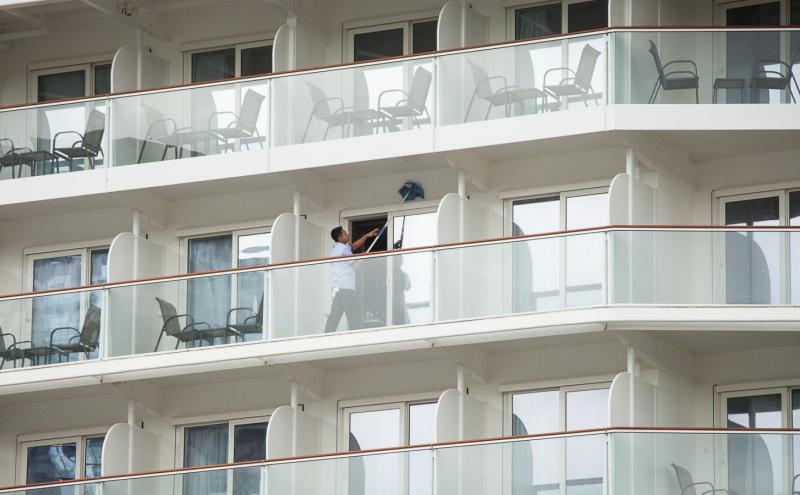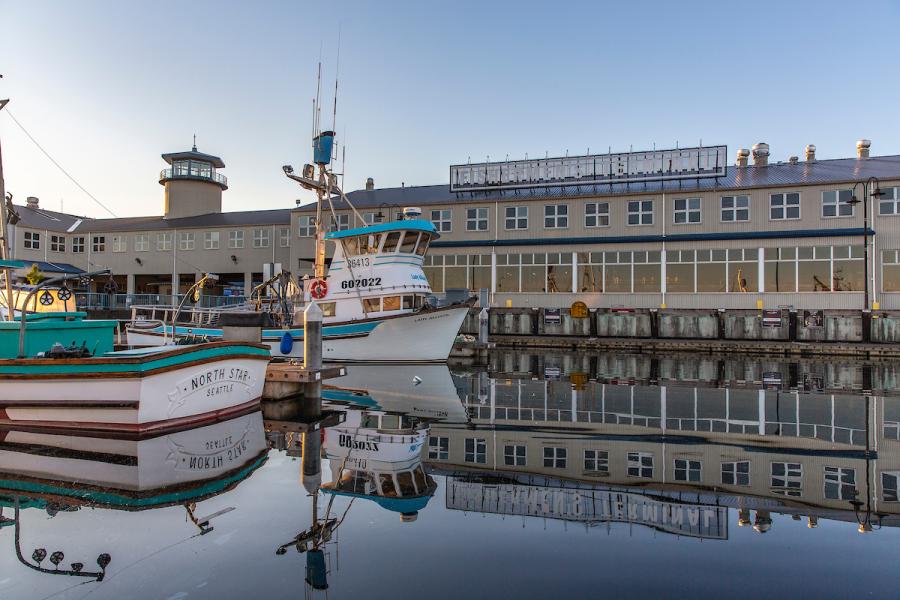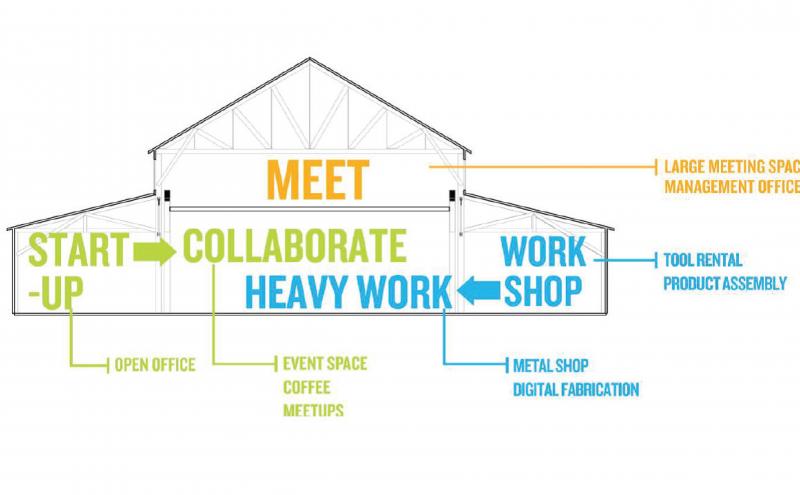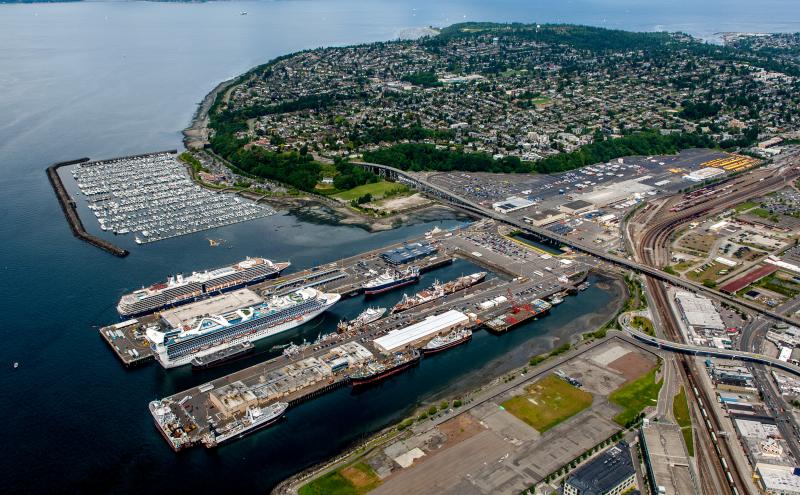
I had the pleasure of addressing the Alaska Business Forum today. This was a great opportunity to highlight the strong — and historic — relationship between our two great states. Since the founding of our territory, Seattle has served as the “last stop’ before the great expanse of Alaska, providing material and goods for those seeking fortune during the gold rush, and later, for those working the ocean for fish and the fields for fuel, and for cruise tourism as so many enjoy the great outdoors that only this last frontier can provide.
Today in this COVID era, the Port of Seattle and our partners continue to seek ways to safely maintain and grow this great relationship while establishing safe routes forward. Cruise has been an integral business line for the Port of Seattle and an important part of our regional economy for the past 20 years. Prior to the COVID-19 pandemic, the Port of Seattle was forecasting a record year for 2020 with 233 cruise vessels scheduled to sail from Seattle with an expected 1.3 million passengers expected through our terminals this season, supporting 5,500 jobs, and providing nearly $900 million in economic impact for our region.
Steps towards reopening the economy
As we look to reopening our economy, the Port responded to a Request for Information (RFI) from the United States Center for Disease Control (CDC) and Prevention, providing information pertaining to the safe restart of cruise operations. Cruise lines also submitted proposals for the resumption of cruises.
The Port supports strong federal standards on all travel, including cruise and aviation, to ensure the safety and well-being of communities, employees, and passengers across the nation. In response to the CDC, the Port emphasized that accountability and transparency on multiple planning scenarios such as transportation, medical care, quarantining, excursions, and precautionary measures are essential for the safe resumption of cruise.
Members of Cruise Lines International Association (CLIA), also announced the adoption of “mandatory core elements of a strong set of health protocols.” The core elements include requirements related to testing, mandatory mask-wearing, physical distancing, ventilation, medical response, and shore excursions. We are reviewing the cruise industry proposals, and if CDC and local public health officials find these proposals to be effective for protecting passengers, employees and members of the community that would bode well for our cruise season in Spring of 2021.
Health and safety are first priority
But safety remains our highest priority, and we look forward to the day when federal and local health authorities determine it is safe to resume cruise operations and the cruise industry can rebound and play a role in supporting economic recovery.
In the meantime, the Port will continue to work with public health partners from the national to local level, along with cruise stakeholders and partners to implement enhanced procedures that will ensure that cruise terminals and facilities are safe for the community, passengers, and crew as we look to the 2021 season.
The Port will also be looking at best practices put in place currently by health authorities and cruise lines that have begun operations in other parts of the world. These health models — and their results — will inform decisions as the Port prepares for further cruise operations in Seattle.
As always, environmental stewardship will remain a core tenant of our operations. We maintain a unique, voluntary clean water agreement between the Port, the cruise lines, and regulators that manages wastewater discharge, creates stormwater best management practices, decreases emissions from oceangoing vessels, and provides shore power that has reduced carbon emissions by 2,900 tons in 2019.
Regional strategy for recovery
Our recovery strategy for the region includes four core components: stabilize businesses and maintain essential services, focus on the most vulnerable communities, invest where others are not, and safely operate our gateways. In line with these components, I want to mention a few other maritime efforts that the Port of Seattle is engaging in.
Tenant relief
As we assist our customers where possible, timely relief to tenants in the form of deferments and lease adjustments came last April. Our rent deferral programs were open to any upland tenant or moorage customer who could demonstrate negative impact by COVID-10. Forty seven tenants out of around 200 executed deferral agreements and 31 vessel owners out of around 2,000 (1,500 recreational, 500 small fishing, 22 large fishing) also deferred moorage.

Maritime Innovation Center
On the workforce side, the Port is finishing design on the Maritime Innovation Center and planning to start renovating this facility next year, breaking ground in the fourth quarter of 2021. This facility will help us support emerging maritime companies and help us sustain and modernize this key industry. We were quite pleased with our inaugural maritime accelerator that ran earlier this year. It showed us that innovation is alive and well within the maritime industry — there is tremendous potential. We are also renovating the oldest building we have (the Historic Ship Supply building) into a modern facility that can put our maritime industry on a sustainable path to the future.

Commercial fishing
Lastly, on fishing, the catcher/processor fleet is still very active at Terminal 91 recapitalizing and modernizing. We expect the new North Star (the one vessel that was damaged in a hurricane two years ago, just prior to delivery) to be arriving this fall from the Gulf. he new Arctic Fjord is expected to arrive next year. Ocean Peace has performed a complete overhaul of a vessel it’s adding to their fleet with the new name: Bering Hope. These vessels are valued customers providing revenue to the Port during these non-cruise months. With the fishing season largely over, aside from one large catcher-processor company that had several outbreaks early in the season, we’ve had no reports of any other cases among the North Pacific Fishing Fleet this year so far.

We hope all of these experiences over the last six months will inform our decisions, especially as we look to other markets and regions for best practices to safely re-open this maritime economy that has provided so much bounty and prosperity for our two states.









